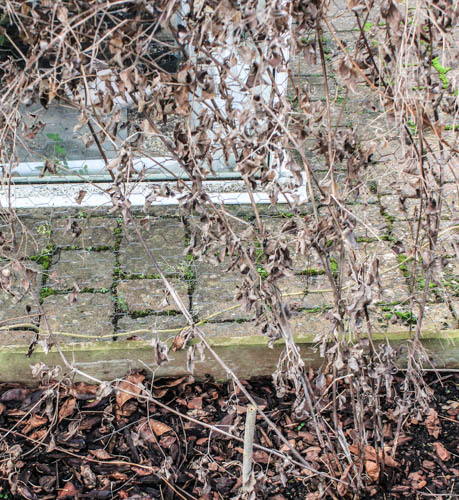
If you are growing C. orientalis and C.tangutica; Clematis texensis, Clematis viticella and their cultivars and the large flowered hybrids like ‘Hagley Hybrid’ and ‘Perle d’Azure’, now’s the time to prune. This group flowers in summer and autumn on the current year’s stems, so select the strongest pair of buds near the base, and cut just above them to remove all of the previous year’s growth. Feed, water and mulch when the first growth appears and look forward to the first flush of flowers later in the year.
There’s now a good selection of potatoes in garden centres, catalogues and on the internet. Sprouting or ‘chitting’ early potatoes before planting is useful for earlier varieties in cooler climates and ‘maincrop’s’ if they’re being planted late. Put a layer of seed potatoes in a seed tray or egg box, ‘rose end’ up – you’ll see a cluster of small hollows or ‘eyes’ at one end. Pop the tray in a cool, light, frost free place and wait for them to sprout. After six weeks at 7C, the shoots will be about 2.5cm long and ready for planting. If the shoots are longer, handle them with care, as they break off easily. If you want a smaller crop of larger potatoes leave the three strongest shoots otherwise leave them alone. Even if you don’t have room for a large crop, grow ‘earlies’ in a flowerpot at least 30cm diameter, an old dust bin or a black bin liner.
Forcing Rhubarb was discovered by chance at Chelsea Physic Garden in 1817, when the crowns were covered in soil after a ditch was cleared. For tender stems, cover the crowns with a 10cm layer of straw, leaf mould or compost and an upturned bucket or a rhubarb ‘forcer’. The tender, succulent stems should be ready for harvest from early to mid-spring. Don’t harvest from a forced crown for at least two years to allow it to recover – grow several crowns for forcing annually, on rotation.
If you’re preparing to sow vegetables, warm the soil with polythene or a sheet of glass ro cloche for a couple of weeks before sowing. This raises the temperature by a few degrees and dries off the surface making a warm, crumbly seedbed that’s perfect for the germinating seeds. It is worth investing in a soil thermometer, to check temperatures below the surface, too.
Shallots need a long growing season and can be planted from mid January in mild areas on free draining soils; in other areas, leave them a little later, into February when the soil is workable. Plant ‘virus free’ bulbs with a trowel, 18cm apart each way, leaving the shoot tips just poking out of the soil. If they are lifted by frost or picked out by the birds, replant them again rather than just pushing the bulbs back into the soil, then you’ll cause less damage to the roots. If the birds continue to be a nuisance, cover the area with horticultural fleece.
Happy Gardening. Matt


